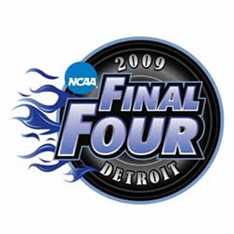Data & Research March 18, 2009
Grid “Lock?"
As March Madness officially gets underway tonight, odds are (no pun intended) you’ve had an opportunity (or two) to weigh in on the NCAA tournament.
Reported by Nevin E. Adams
Unless you’re in some kind of fantasy sports league, the NCAA men’s basketball tournament pool stands out as an event that calls on participants to pick the winners in games that cull a field of 64 college basketball teams down to the Final Four, and a National Champion, all in a matter of weeks.
Based on how most of these pools are structured, it’s nearly impossible to win unless you also manage to pick the final winner – but there are lots of important decisions along the way – that big upset in round one, for instance (there’s always one), or that top-seeded team that is apparently looking ahead to the next round instead of focusing their attention on the mid-ranked seed that will end their dreams of a national championship.
Assuming for a moment that your pick isn’t influenced overly much by loyalty to your alma mater, there is a certain science to making these picks (or so some swear) – and there are some historical trends from How StuffWorks.com that you might want to keep in mind as you fill in your grid:
- A No. 16 seed has never won a tournament game. Said another way, a top-ranked team has never lost the first round.
- A No. 8 seed is the lowest ranked team to ever go all the way and win the national championship (Villanova in 1985).
- Last year was the first time that all No. 1 seeds (Kansas, Memphis, North Carolina and UCLA) made it all the way to the Final Four.
- A No. 11 seed is the highest seed to advance to the Final Four (LSU, 1986).
- The top-seeded teams represent 13 of the 26 national champions between 1979 and 2004.
- The only year that at least one No. 1 seed didn’t advance to the Final Four – 1980.
Digging into things a little deeper, PickManager.com notes that:
- #2 seeds have only lost four times in the first round
- #9 seeds have a higher winning percentage that the #8 seeds in the first round.
- The first round winning percentage is identical for #11 seeds and #12 seeds.
- #9 seed performance falls dramatically in the second round with the lowest winning percentage of any seed that makes it to that round (5.8%).
- A strong number #8 is as good as a strong #6 seed for advancing deep in the NCAA tournament, while a #7 seed has never won in the 4th round
- #3, #4, and #5 seeds that get to the 4th round typically perform well in the 4th round.
- Two #11 seeds have made it to the final weekend of the tournament, while no #7, #9 or #10 seed has ever made it.
- #1 seeds matter and boast greater than 50% winning percentages in every round.
Happy picking!
You Might Also Like:

US Recession Talks Get Louder
A range of banks and broker/dealers have raised the specter of a U.S. recession as the April 9 tariff deadline...

2025 Retirement Outlook: Tax Changes, Cryptocurrency Trends and Litigation Reforms
According to experts at T. Rowe Price, plan sponsors should anticipate policy updates and possible litigation reforms in 2025.

Strategies for Enhancing Portfolio Management
According to the Carson Group, investors are leveraging equity factors like momentum and low volatility and adopting active fixed-income strategies.
